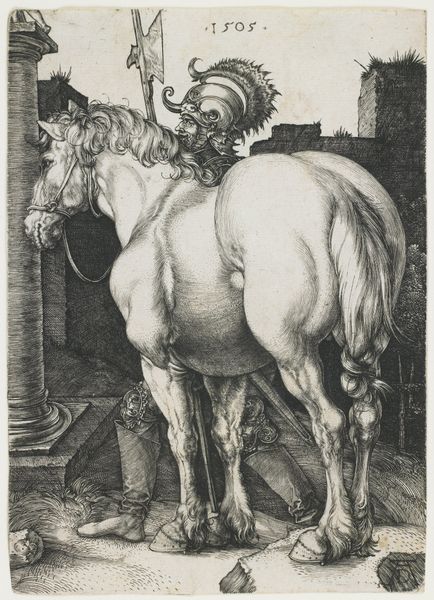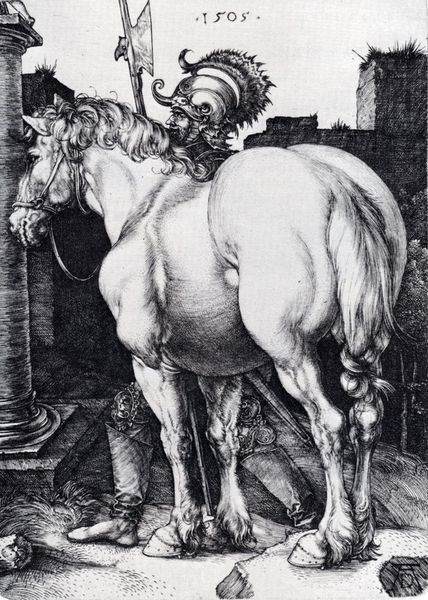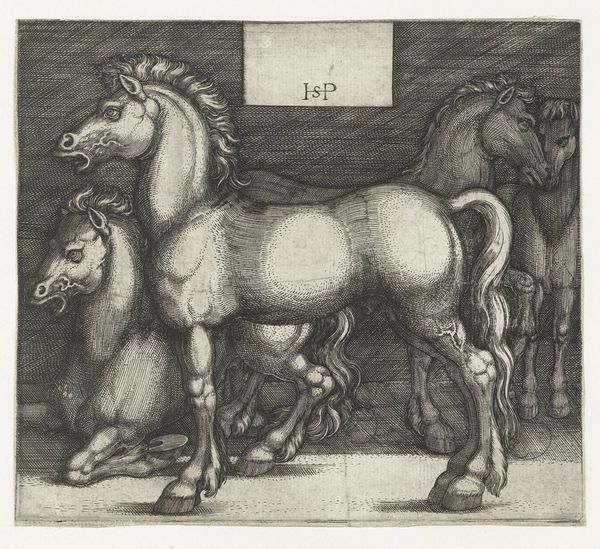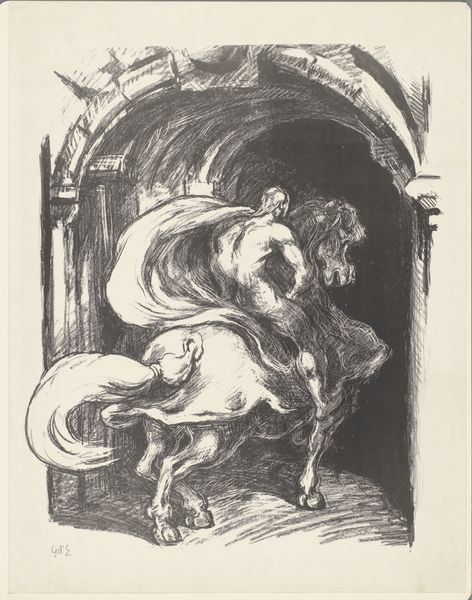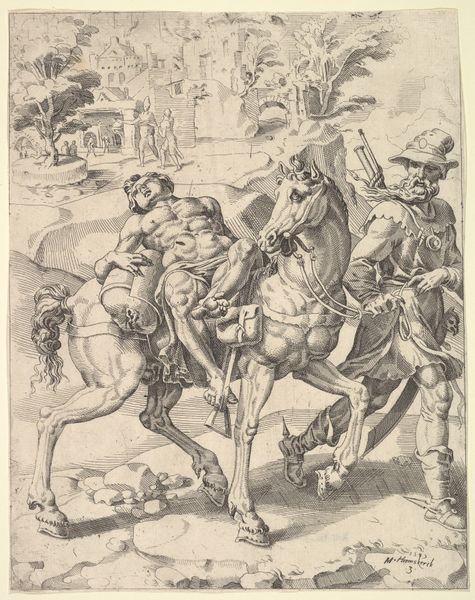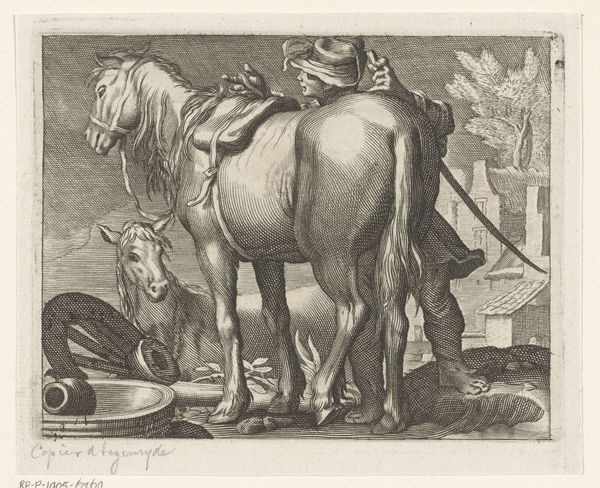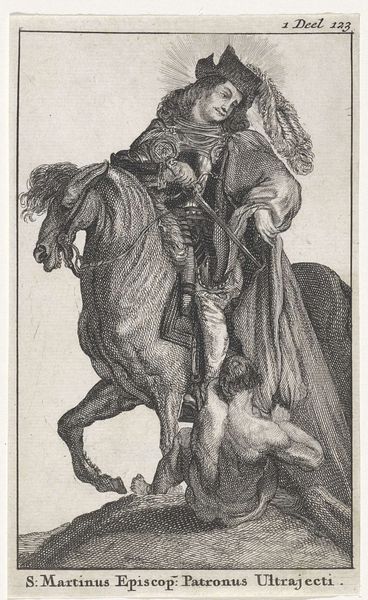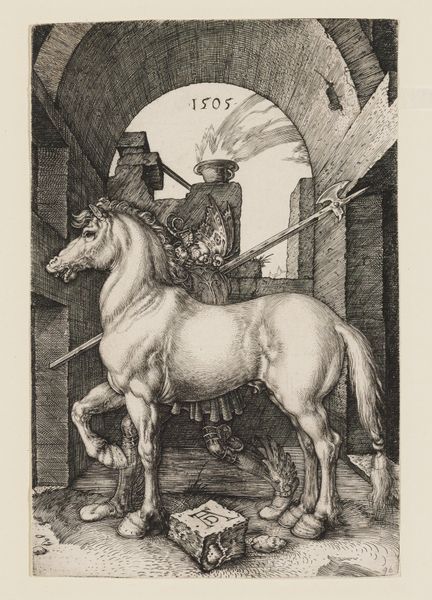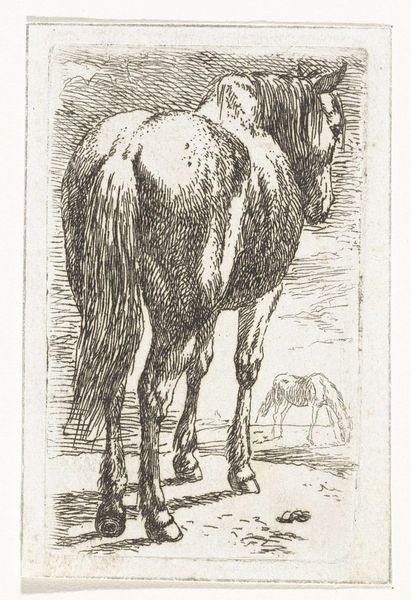
drawing, engraving
#
drawing
#
landscape
#
figuration
#
history-painting
#
northern-renaissance
#
engraving
Dimensions: height 165 mm, width 120 mm
Copyright: Rijks Museum: Open Domain
This print, "Het grote paard," was created around 1564 by Wierix and is currently held at the Rijksmuseum. Note the striking contrast between the massive, almost bulbous rear of the horse and its more delicately rendered head and forelegs. Wierix’s use of engraving allows for intricate detail, particularly in the textures of the horse's coat and the rider's armor. The composition is structured by a strong vertical axis, anchored by the classical column to the right, which opposes the natural, almost wild rendering of the horse and foliage. This juxtaposition creates a tension between classical order and natural vitality, perhaps reflecting the Renaissance interest in harmonizing humanistic ideals with the natural world. The semiotic weight of the horse is significant; it's a symbol of power and status, yet its exaggerated form challenges conventional representations of equestrian nobility. Is Wierix commenting on the burdens of power, or perhaps subverting the ideals of classical beauty? Such questions remain open, inviting us to continually re-evaluate the artwork's complex layers of meaning.
Comments
No comments
Be the first to comment and join the conversation on the ultimate creative platform.
